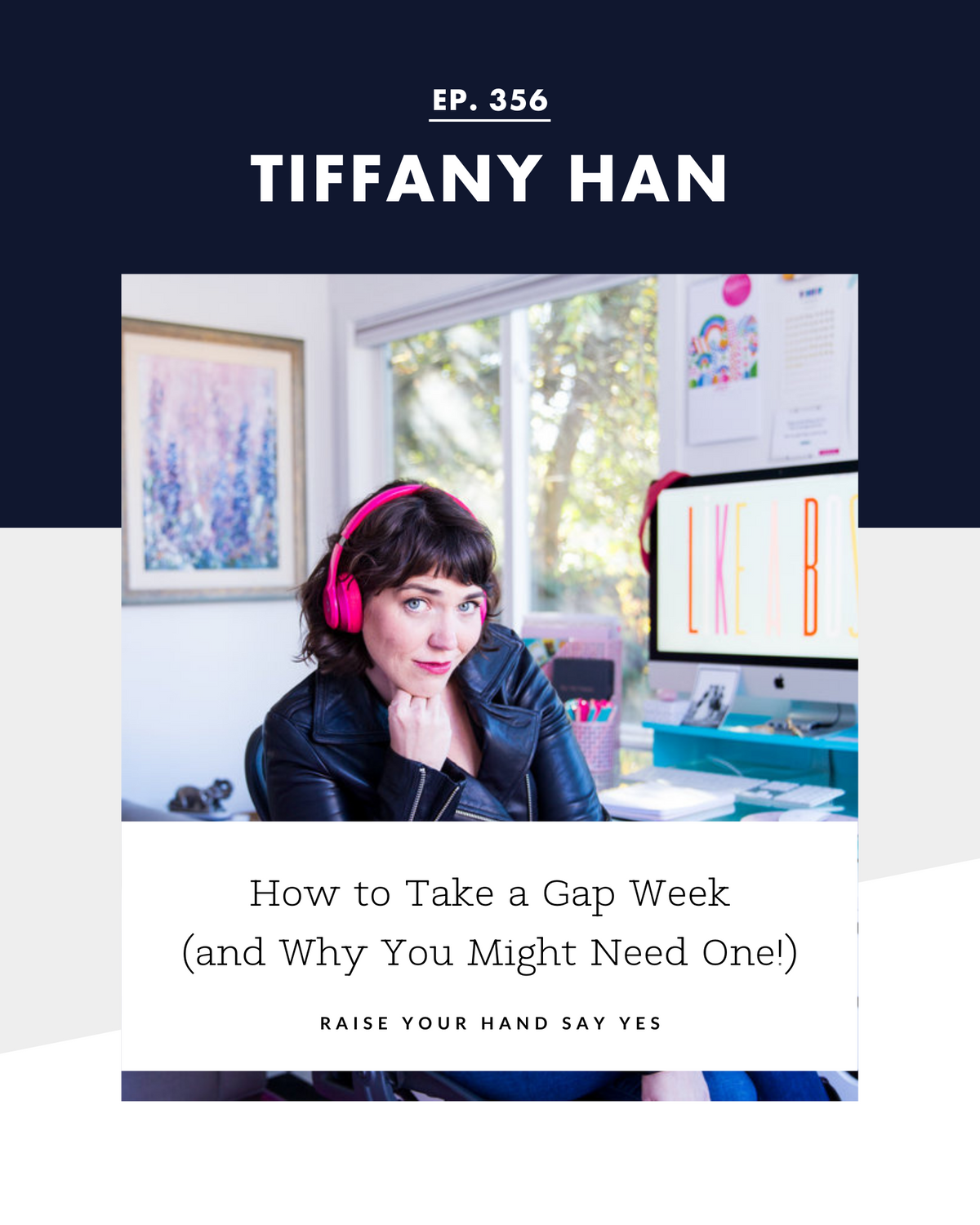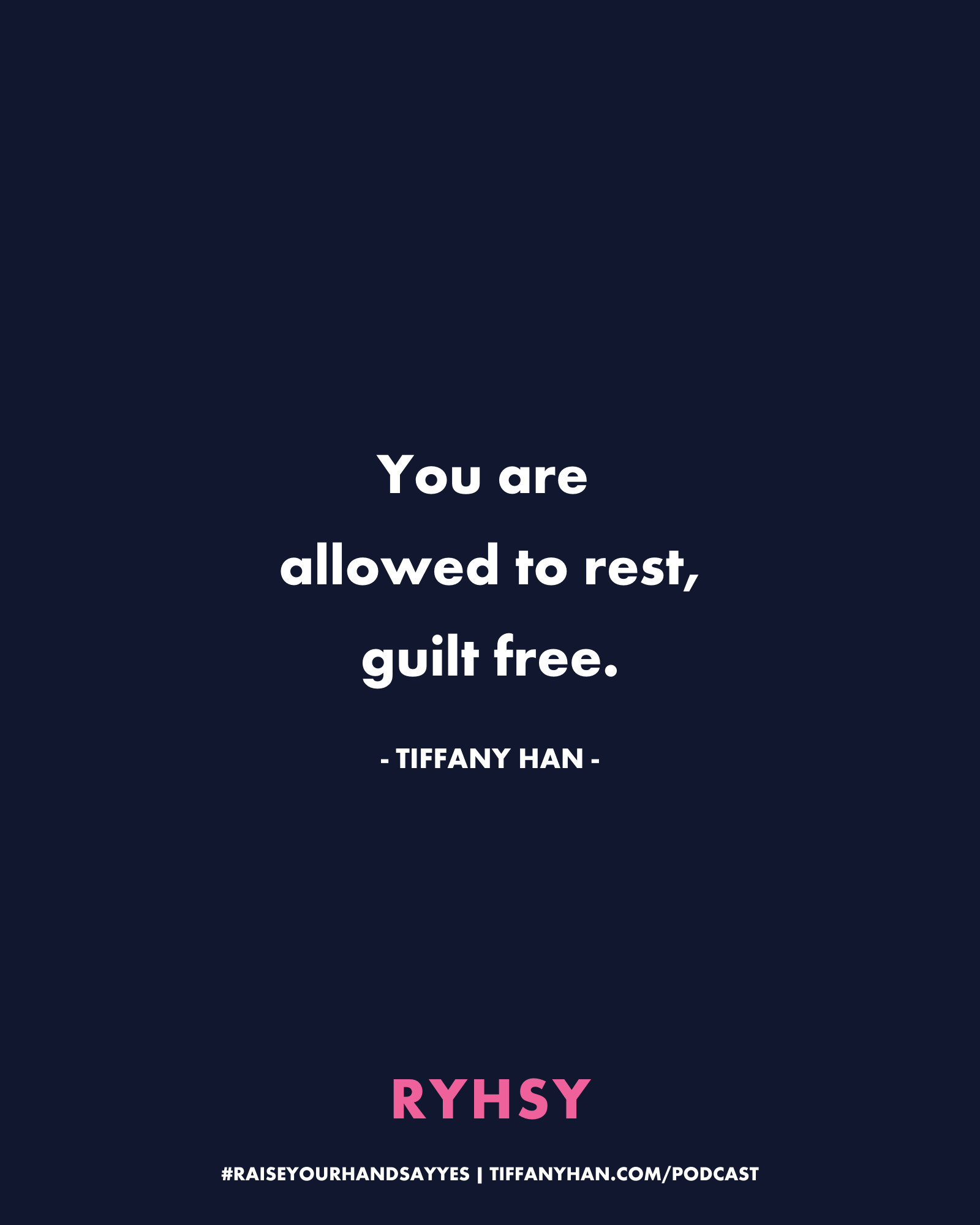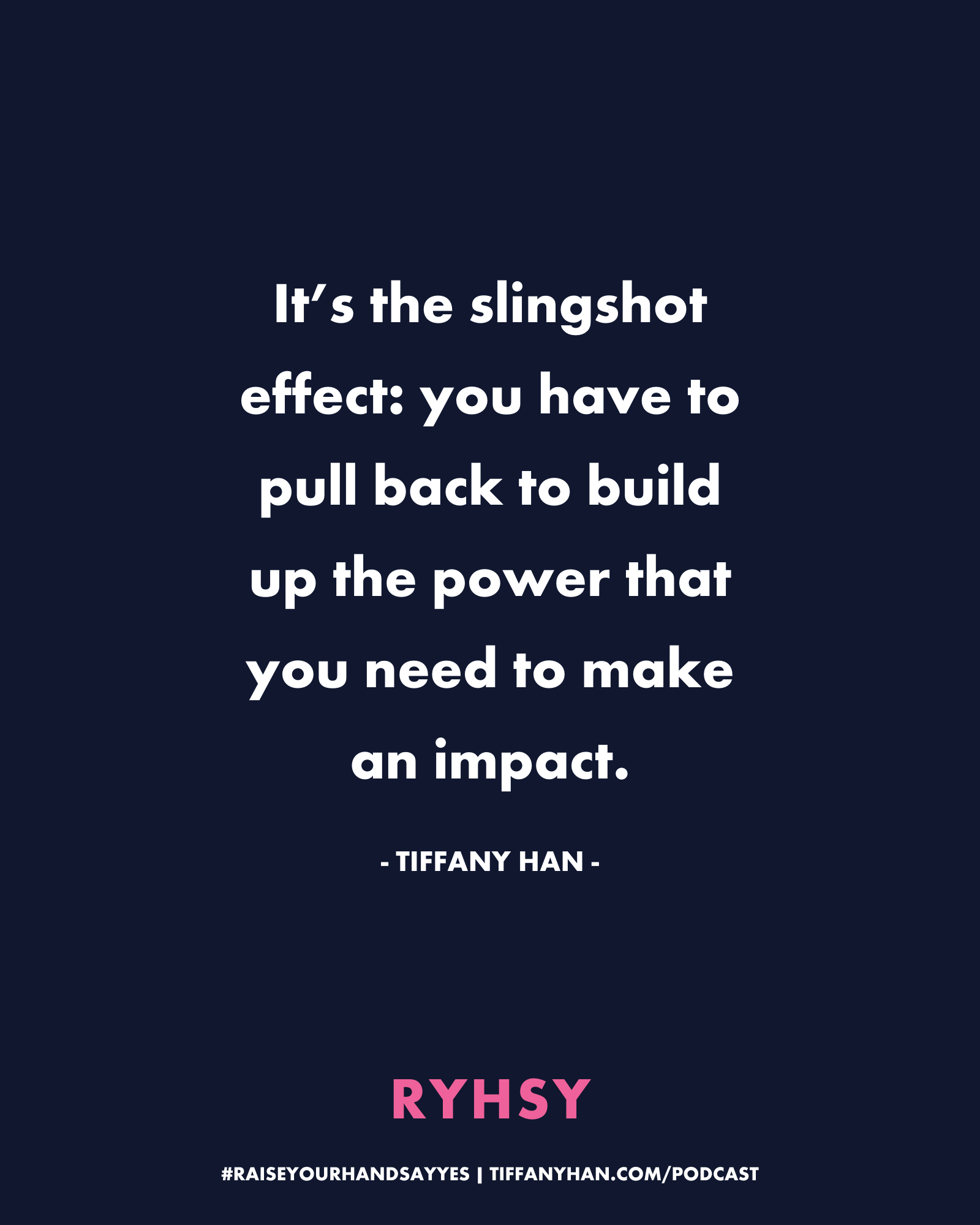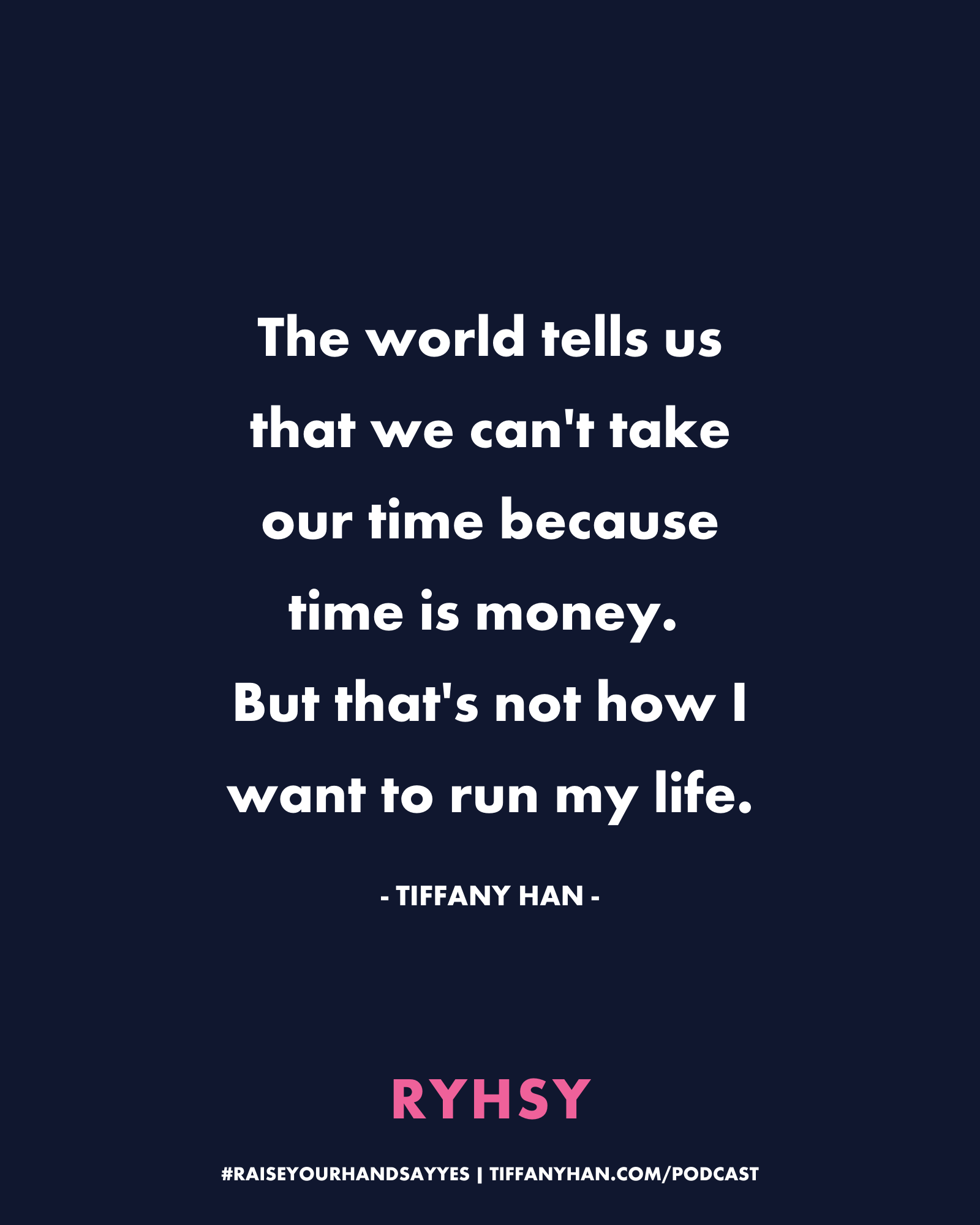I’m on a mission to teach you how to go from busy-but-uninspired to a life that *feels* as good on the inside as it looks on the outside.
Because you deserve to feel good.
Like: really, really good.
Hi. I'm Tiffany.
How to Take a Gap Week (and Why You Might Need One!)

Listen Now:
Full Episode (Right-click to download)
Right now, I’m in the middle of a gap week.
Just like a gap year between high school and college or between college and entering the workforce, a gap day/week/month is an intentional pause. You take a gap week so that you can explore new experiences and try new things.
A gap week is a chance to pause some areas of your life so that you can be productive in other areas, do some deep critical thinking, map out new stuff, and sit in the muck of it.
When considering your gap week, I want to give you full permission to think about what tasks would feel really good to dig into. It might be something you’ve put off for a long time or something you don’t have the headspace to hold alongside everything else—think repainting your bathroom, making a shift in your business, or taking an intensive class.
A Gap Week Is NOT a Break
I want to be clear, though, that a gap week is NOT the same as taking a break. Longer breaks are for recovery from burnout, for when you’re so exhausted that you feel like screaming into your pillow every night.
If that’s you, you need to take a legit break, not a gap week. If you are burnt out, and you’re not addressing the burnout, the exhaustion, the frustration, the resentment, the anger, or the loneliness, then your brain isn’t going to be able to think the way that you’re going to need it to for the gap week.
We are really good at begrudgingly resting, or resting but feeling guilty about all the stuff we aren’t doing. If you take a break, try to do so without guilt. Healing takes time.
Why You Should Take a Gap Time
So why should you consider a gap day, week, or month? Here are my top three reasons:
1. When everything is a priority, nothing is a priority.
We can’t focus on what’s important to us when everything falls into the “important” category. We need to clear the decks to give ourselves a chance to catch up and catch our breath.
Because of the pandemic, fewer and fewer people are taking vacation days. If you have some vacation days available to you, take them. Give yourself the space to recalibrate what is important to you and what should be at the top of your priority list.
2. You can’t figure out what you want if you’re just plowing through.
When your whole life is just “go go go go go,” you have no perspective.
The world tells us that we need to get everything done as quickly as possible and that it needs to be flawless. And not only that, but don’t you dare be high maintenance! Don’t you dare need extra time, because time is money.
That is the culture that we live in. And, sure, that works for some people. But that’s not how I want to run my life or my business. That is not where I operate at my greatest output or my most spiritually connected.
When I operate at the frantic, bobsled pace that the world demands, I can feel burnout biting at my ankles. Even worse, I know I can’t move beyond the surface level in my work when I try to go that fast. It’s not how I want to show up, so taking a gap period allows me to reset and decide what is important to me.
3. The pace we’ve decided is normal isn’t sustainable.
If you are building your life upon a foundation of unsustainable habits, mindsets, relationships, perspectives, actions—it’s not going to last.
Eventually, it’s all going to crumble. I’ve tried building my life that way, and it just doesn’t work.
What if, instead of hitting that wall and needing this massive recovery time, we just slow ourselves down and give ourselves a break? We can cut ourselves some slack and operate under an umbrella of grace.
It’s going to feel like it’s taking longer. But I actually think it moves us forward faster. It’s the slingshot effect: you have to pull back to build up the power that you need to make an impact.
How to Take a Gap Time: Make the Space
Whether you need to ask your boss for some vacation time or give yourself that time off from your business, you need to make the space on your calendar for a gap time.
Often, we will do what is immediately urgent rather than what is truly a priority. For example, I need to write some new website copy for my business. It isn’t urgent, so I’ve set it aside a few times. But it is a priority for me—it’s the one piece of the funnel through which everything else flows.
I can’t get that written if I’m bouncing from meeting to meeting, so I metaphorically did that thing that they do in movies right before they get intimate, where they push all the papers off the desk.
I cleared my calendar for two weeks and only kept delightful items on there, knowing that if it feels delightful, it will bring me more creative energy. In general, though, meetings were off my schedule, and I put big blocks on my digital calendar. That way, I wouldn’t be tempted to schedule over them.
Besides clearing my calendar, I’m also taking a break from Instagram. I always feel behind with Instagram, like I should be posting 700 billion things every day. And not only am I behind on posting, but I also need to plan for tomorrow and the rest of the week. In the end, I post nothing, and that does not feel delightful or radiant or rooted in radical self-belief.
It’s easy to feel responsible to all of these platforms, but they’re genuinely in the low priority/high urgency category. Instagram is designed where stories disappear in 24 hours. We have to ask the question: by letting social media FOMO drive our decisions and our choices and actions, what are we missing out on in our real lives?
Lastly, I’m giving myself gentle mornings. Usually, I’m getting the kids and myself ready for the day by 8:30 or 9 AM. During my gap time, I’m allowing my morning to be slower. That can look like taking a long shower, going on a walk with my girls before they have virtual school, taking time to make dinner in the morning, or having a conversation with Tim over breakfast.
Giving myself permission to not have to rush into my day feels so nice. I recognize that this is a luxury and a privilege, though. Even if this isn’t possible for you, can you find a way to give yourself a moment of expansiveness or delight before rushing into your day?
Maintain the Space
As soon as you block your calendar or take the day off, someone will want to impede that space. They’ll ask you, “Can you do this? What about this? Or this?”
Your answer has got to be “no.” Practice saying no! Your answer could also be, “no, but I can in a couple of weeks,” if that feels good to you. But your response can also just be, “no, I’m sorry, I can’t.”
Saying no is holding the boundary you’ve set by blocking off your time. Setting the boundary is hard, but holding it when you get pushback is much more challenging. But what’s the point of doing all of this and making the space if you’re not going to maintain it for yourself?
Honor the Space
If I were to block my calendar but then spend the whole time on Instagram, that doesn’t feel good. What’s the point of that? Honoring the space is about following through on what you want and need in a way that feels loving, kind, and gentle.
For example, taking a more expansive approach to my morning routine helps me show up more creatively. It’s very different from rushing to squeeze in the creativity before meetings. Expansive mornings are a way of honoring what I need during the gap time, rather than working against myself.
Pay attention to the things that can feel excessive and indulgent. They might actually be necessary for you to move forward with the highest priority things in your life.
Break Down Your Tasks
To honor the space you’ve made, start by breaking down what you want to do into small tasks. If you’re going to put art on your walls during your gap week, the first step is not “put art on the walls.” The first step is, “go through your house and gather all of your art frames in one place.”
Zoom Out to the Bigger Picture
You also have to give yourself permission to zoom out and look at the big picture. We’ve got to see the difference between being on the bobsled track in the bobsled or being up in that observer stand watching where you can see the entire course.
Make Decisions Without Worrying About the Be All & End All
Lastly, you need to make decisions. Creativity thrives within a structure, as long as that structure doesn’t feel like a cage. For me, I’m very clear on what the pieces are that I want to walk away with during this gap time. And I’ve built in some accountability, too—there are people I’m in conversation with to make sure that that happens.
When you’re making decisions, make decisions that are good enough for each moment rather than the end all be all answer.
For example, I’m renaming the Raise Your Hand Say Yes Inner Circle right now as part of my gap time. I came up with a name that I liked, but part of my brain wanted me to simmer on the name instead of just choosing it. Instead, I decided on the name for right now, with full permission to change it if a better name pops up. As Tanya Geisler says, “leaders decide they are willing to make a decision.”
Build From the Bottom Up
We are so good at thinking top down. If I’m thinking about a book deal, it’s much more fun to think about what outfits I’ll wear on the book tour over what the actual book will be about. But the bottom of that book deal is the book!
Thinking from the top down doesn’t get us the thing that we want. So build from the bottom up, rather than the top down.
Are You Going to Try a Gap Time?
Lastly, be willing to be surprised at how good a little change of pace can feel. Be ready to be surprised at how much you can accomplish or how much fun you can have, or how surprisingly delightful it can be.
And just in case there’s a question of this: You deserve it. You’re worth it. You’re not lazy. And it’s going to be okay.
If you try a gap time for yourself, be sure to send me a DM on Instagram. I’d love to hear about it.
Resources
Timestamps
-
[02:14] What is a Gap Week?
-
[03:13] A Gap Week Is NOT a Break
-
[18:15] Why You Should Take a Gap Week
-
[27:26] Making Space
-
[29:24] Maintaining Space
-
[30:17] Honoring the Space



Privacy Policy | Terms + Conditions | © Tiffany Han 2024 | site by anthem creative co.
Sign up here to get weekly-ish insights on keeping your life Technicolor, podcast episode releases (so you don’t miss a beat!), and early access details on opportunities to work with me!